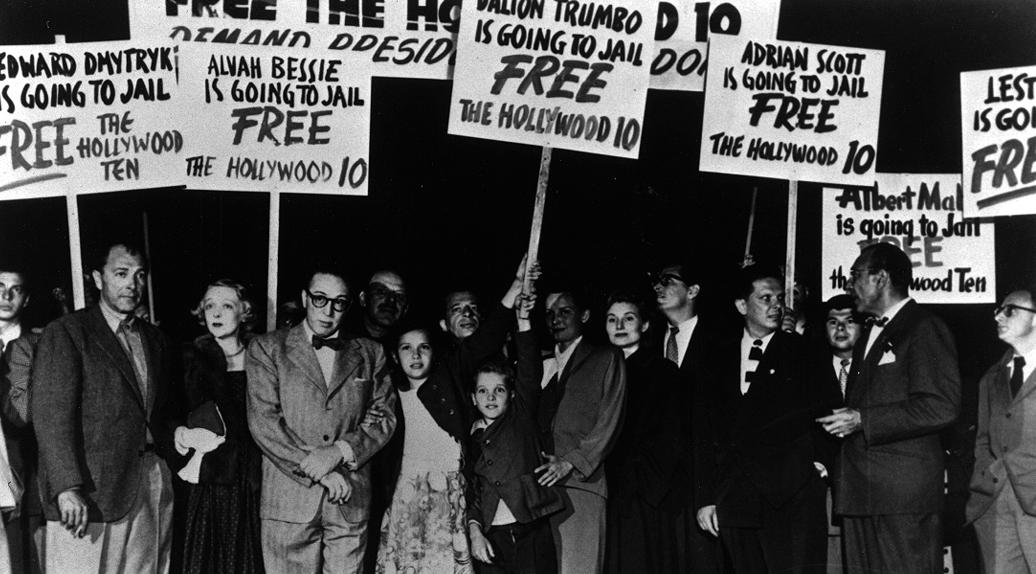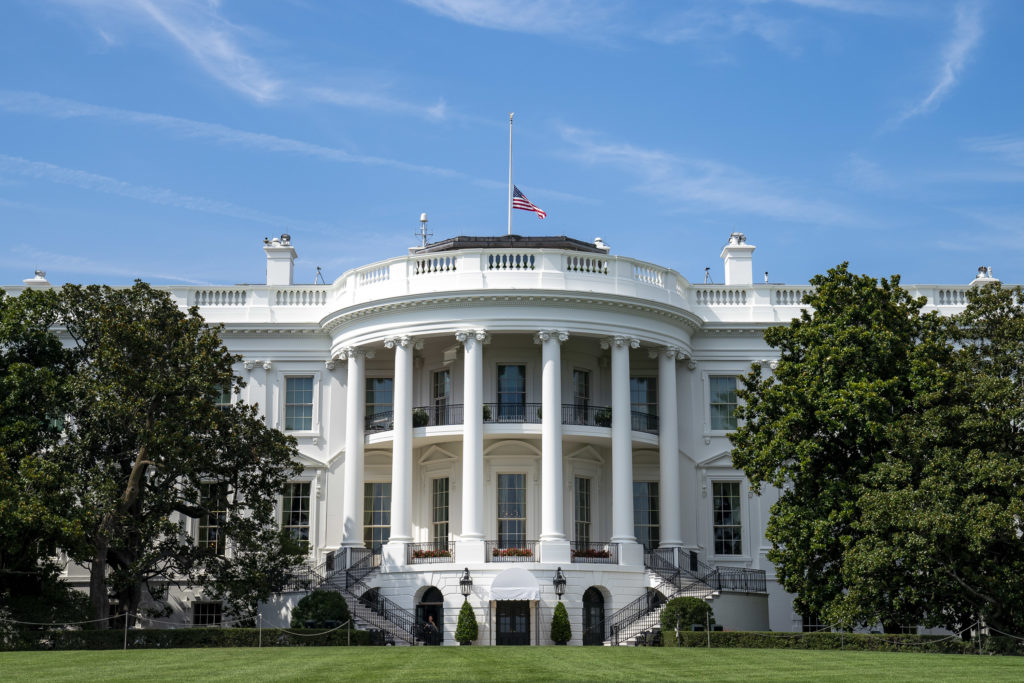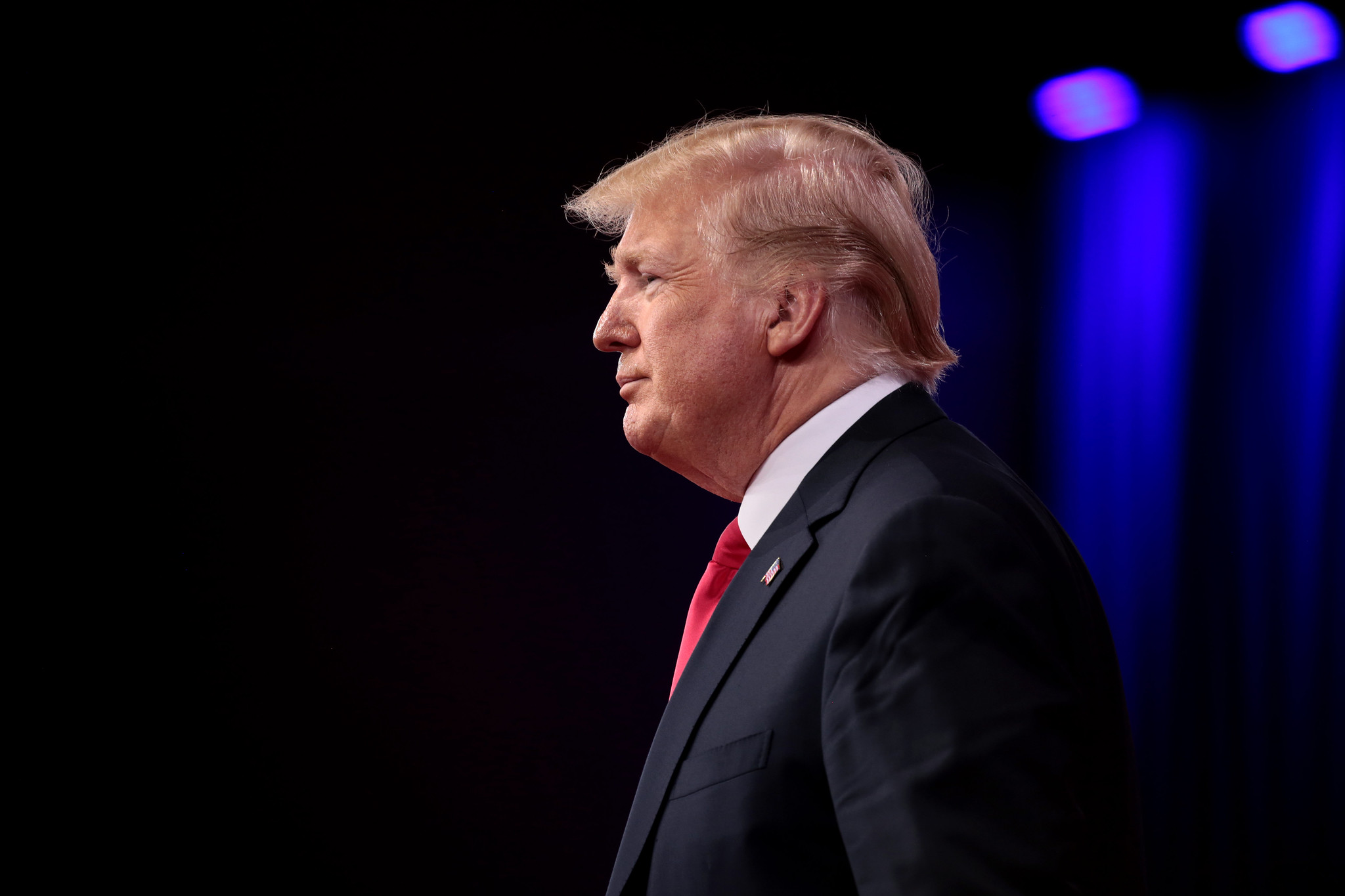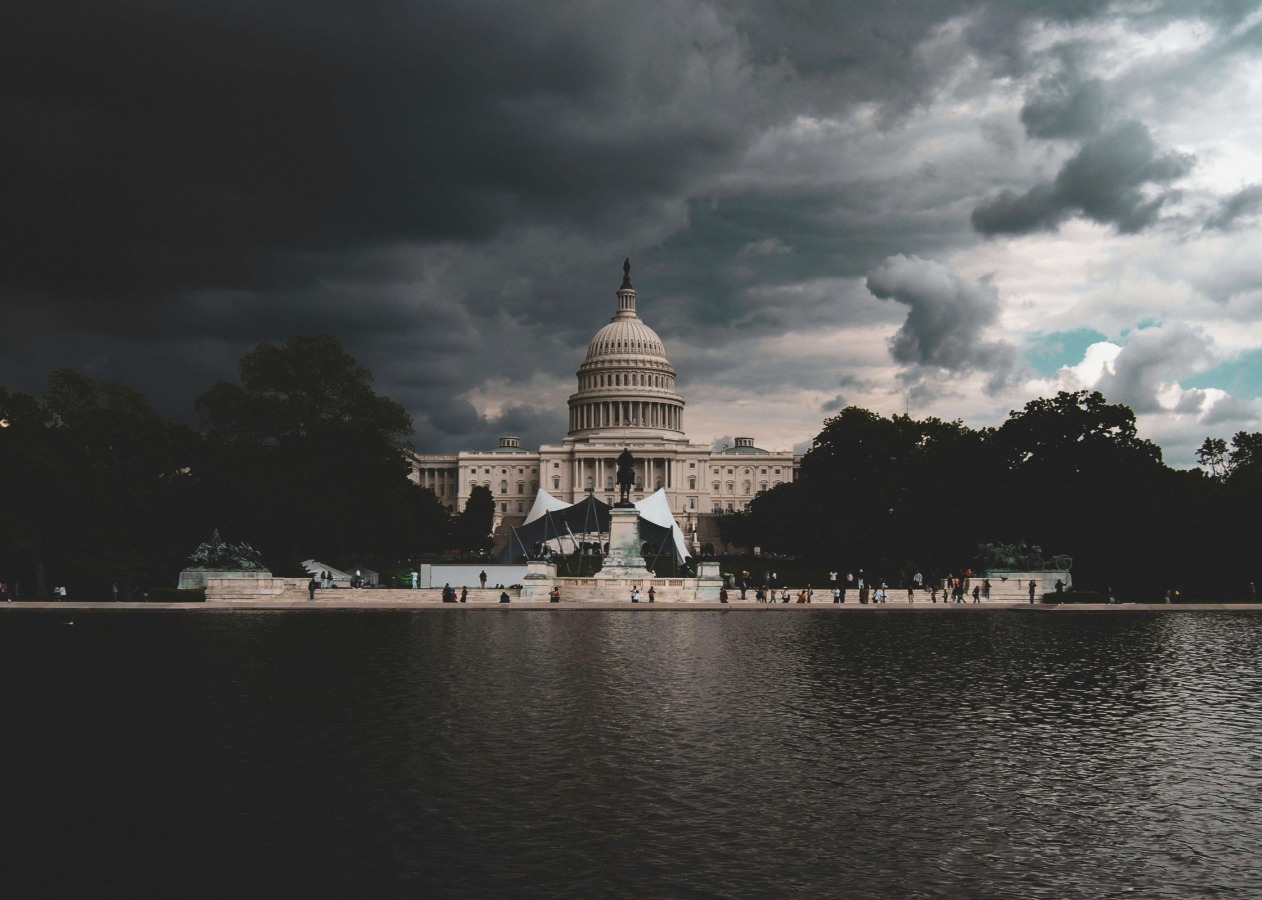Process as Punishment: An American History of Political Spectacle

Published by The Lawfare Institute
in Cooperation With

The House Un-American Activities Committee (HUAC) operated for 37 years, published 50,000 pages of content, and issued more than 5,000 subpoenas.
Most Americans don’t know this; until recently, I didn’t either. Like many, I conflated HUAC with McCarthyism: that infamous period in the early 1950s when Sen. Joseph McCarthy hunted communists on TV, until he was dispatched with help from Edward Murrow and a now-famous Joseph Welch rebuke: “Have you no decency, sir?”
In reality, strident inquisitions and the abuse of subpoena power lasted for decades in the lower house. I learned this after becoming fascinated by HUAC following the receipt of my first congressional subpoena, from Rep. Jim Jordan and his House Judiciary Select Subcommittee on the Weaponization of the Federal Government.
I’m not a historian. But in March 2023, Jordan demanded that my former social media research center, Stanford Internet Observatory (SIO, which studied adversarial online abuse including disinformation), turn over any and all communications with social media companies or the executive branch as part of the kickoff to a sweeping investigation into a purported “Biden censorship regime.” The demand for our documents rested on nothing more than a denunciation by unethical reporters in a hearing Jordan himself had staged. They’d reframed our 2020 project to study and mitigate election rumors about voting, the Election Integrity Partnership, spinning it into an elaborate fantasy about academics colluding with the government to compel tech platforms to silence Trump supporters via the mass censorship of tens of millions of posts. This was, to put it mildly, blatantly false.
The mid-March letter escalated into a mid-April subpoena. Then came another subpoena, from the House Homeland Security Committee. Then came requests for “voluntary” closed-door testimony, with video recordings and transcriptions for the committee (the interviewees themselves received neither). My colleagues and I were smeared repeatedly by committee-friendly media; even students were dragged into the arena.
The frame of a “Censorship Industrial Complex” was tailor-made for innuendo, insinuation, and guilt-by-association claims; two people merely appearing on a webinar together was enough to justify speculative posts about how they’d colluded to censor conservatives. Other House committees began to pick up the phrase, applying it to investigate the activities, association, and speech of groups ranging from civil society organizations to advertisers.
Jim Jordan’s House Weaponization Committee operated for two years and published 17,000 pages of content. And Jordan issued at least 91 subpoenas across Weaponization and its parent committee, House Judiciary.
Through it all, I had the nagging sense that Jordan’s targets could have—should have—responded differently. Stanford, like several other institutions that received demands, worked to comply with the committee’s requests, hoping to deescalate the attacks. They largely chose not to fight the battle for public opinion—declining to comment or request corrections in nearly all circumstances, and advising those of us who were smeared not to respond. When material turned over under subpoena was leaked, they were surprised. Many of the institutions targeted by the Weaponization Committee seemed to believe they were dealing with a Congress and a media from the comparatively good-faith 1980s. In reality, they were dealing with a Congress and media more akin to the 1940s.
At many moments in the investigation process, I wondered about the lessons of the past: What had targets of bad-faith investigations done previously? That is how I found myself buried in books, interviews, and transcripts about a U.S. House of Representatives committee, disbanded 50 years ago, that had perfected this attack playbook.
HUAC’s history is long, but ACLU lawyer and former committee target Frank Donner distilled its legacy in one line. Writing in his 1961 book “The Un-Americans”—as HUAC was still active—he observed that it “spent the most money, called the most witnesses, published the most pages, visited more places, ruined more lives and [was] responsible for the least legislation of any Committee in Congress.”
HUAC’s lack of legislation should not be mistaken for a lack of impact. Rather, it was a committee focused exclusively on exposing its targets—and exposure was enough. Once artists, organizers, teachers, lawyers, and other Americans were smeared by the committee as subversives, their reputations disintegrated and their projects collapsed. Donner chronicled HUAC’s heyday as a time of “loyalty oaths,” “congressional witch hunts,” and “pervasive self-censorship.”
American institutions, academics, and media must quickly reacquaint themselves with this period in history, because accusation-as-gospel and hearing-as-punishment are quickly reemerging as a prevalent force in U.S. politics—and neither is likely to stop unless targets begin to push back more effectively.
HUAC: A Brief History
HUAC is often conflated with McCarthyism, but the two were distinct. McCarthy’s anti-communist crusade burned bright and flamed out quickly (1950-1954), undone by his own egregious overreach. HUAC, by contrast, was institutionalized persecution. It operated for more than 30 years (1938-1975), investigating labor unions, Hollywood, academia, and even local community groups. Perhaps more important, HUAC’s power didn’t come from its own enforcement but from what it cowed others into doing. Afraid of attracting its attention, employers, universities, and entire industries blacklisted colleagues, fired employees, and policed speech. What HUAC began, institutions finished.
Initially formed in 1938 as the Dies Committee, chaired by Texas Democrat Martin Dies, it had a sweeping mandate to investigate “alleged disloyalty and subversive activities” by private citizens, public employees, and organizations suspected of ties to communism and fascism. The committee made rooting out subversion a sustained political priority. At its opening session, Dies struck a noble tone: “We shall be fair and impartial at all times and treat every witness with fairness and courtesy. The Committee will not permit any ‘character assassination’ or any ‘smearing’ of innocent people.”
Then, almost immediately, it did exactly that.
The Dies Committee published lists of allegedly subversive organizations, focusing largely on the left. Its sweeping allegations relied on flimsy evidence and guilt by association. It was, at times, comically sloppy: In one infamous early episode, members interrogated the director of a federally funded theater organization who had written about Elizabethan-era playwright Christopher Marlowe and produced an adaptation of Euripides’ “Trojan Woman.” They demanded Marlowe’s full name for the record and wondered whether Euripides—who died 2,000 years before the Soviet Union even existed—might have held communist beliefs. Yet HUAC was no joke; one of its reports was used to bolster the justification for the internment of Japanese Americans.
In 1945, the House Un-American Activities Committee became a permanent standing committee with sweeping authorization to investigate threats of “subversion or propaganda that attacked the form of government as guaranteed by our Constitution.” Over the next 20 years, it proved adept not at identifying actual communists or subversives, but at naming targets and punishing them. Despite the flimsiness of its accusations, many of the organizations it accused lost their funding. Individual targets were blacklisted, rendered unemployable, and socially exiled.
Different Eras, Similar Strategies
As false allegations about the Election Integrity Partnership’s work persisted and escalated, it became clear that remaining silent was simply creating a void of accurate information. My instinct—as a person frequently smeared—was that we should be speaking up loudly and frequently to correct the record. My concern, however, was that if I did, I’d be seen as “difficult.” And yet, it wasn’t clear that staying quiet would avoid that fate. The subcommittee’s witch hunt, along with accompanying lawfare, had already succeeded in making defending our work expensive. Standing firm on our right to continue our research would cost even more. It became obvious to me that many others in academia would soon face similar dilemmas: The committee grew more emboldened with each concession it extracted. Researchers studying election disinformation were an early target, but we would not be the last.
The subject of strategic defiance versus acquiescence became a topic of personal interest. As I began to delve deeper into HUAC’s history, three strategic parallels between then and now stood out.
Manufacture a Boogeyman. HUAC was successful because it understood the political value of a villain. It leveraged the idea that communist infiltration was an existential threat to the nation at a time when real Cold War tensions concerned many Americans. However, it did not do much discovery of actual Soviet spies—instead, it targeted labor leaders, civil rights activists, academics, and artists, branding them as “fellow travelers” working to undermine America from within.
Hollywood became one of its most fruitful hunting grounds, because of its visibility and cultural influence, and the potential for high-profile targets. In 1947, the committee went after the “Hollywood Ten,” a group of well-known screenwriters and directors. Some had leftist political views or past disclosed associations with the Communist Party. None had ties to Soviet espionage. Several were baselessly accused of embedding communist messages in films. They refused to testify, citing their First Amendment right to free association, and were jailed for contempt of Congress. Although the convictions were later overturned and history has come to look upon the resistance of the Hollywood Ten as a bold and principled stance, in the moment many Americans were frightened. The committee successfully tapped the zeitgeist and captured attention.
Guilt by Association, Innocence Denied. Once HUAC had the rough shape of its boogeyman, it cast a wide net, operating on the principle that proximity to the accused was itself incriminating. The committee pursued guilt by association, accusing individuals of being communist sympathizers based on long-past ties, anonymous tips, or presumed ideological alignment rather than any evidence of actual subversive activity.
Being named was enough. HUAC famously demanded that witnesses report on their friends and colleagues, and many did—not necessarily out of conviction, but to take the heat off of themselves.
Some witnesses, however, chose not to cooperate on principle, invoking their constitutional rights. Folk singer Pete Seeger took this route. Like the Hollywood Ten, he pointed to the First Amendment. When HUAC questioned him in 1955, he repeatedly refused to discuss the audiences for his past performances, his political beliefs, or his associations—not because he had anything to hide, but because he refused to legitimize the inquisition. At one point, frustrated by the committee’s circular logic, he alluded to the questioning of Jesus before Pontius Pilate, noting the absurdity of being pursued not for a crime but for beliefs. His defiance earned him a contempt of Congress charge, for which he was sentenced to a year in prison (later overturned on appeal).
Other witnesses invoked the Fifth Amendment, refusing to testify on the grounds that no one should be forced to self-incriminate. However, HUAC treated pleading the Fifth as an admission of guilt as well; those who did so were usually also fired, blacklisted, and ostracized. There was no winning, once named. The committee never cleared anyone. When its investigations turned up nothing, it simply moved on.
Process as Punishment. At the height of HUAC’s power, the accusation alone was the punishment. No charges nor verdict were necessary—just being called before the committee was enough to end careers. Professors, filmmakers, and activists were not tried or convicted of crimes; they were simply named, put on a list, and rendered unemployable.
Frank Donner captured the hearings for what they were: “a trial of the witness suspected by the Committee of subversion – but without any of the traditional safeguards of a trial.”
HUAC didn’t need to enforce its judgment directly—it was enforced by proxy. Universities fired faculty. Hollywood studios blacklisted actors and screenwriters. Unions expelled members. Professional associations cut ties. The blacklist wasn’t dictated by law—it was a product of fear, a consequence of institutions choosing self-preservation over resistance.
HUAC also succeeded because of media complicity.
Newspapers published names and accusations uncritically, turning committee lists and leaks into front-page smears. A mere mention in print could derail a career before a witness ever testified. The committee understood that public exposure was a weapon and that sympathetic journalists were its enforcers. Gossip columnists like Hedda Hopper gleefully helped impose the blacklist, branding actors and directors as “Reds.” The pressure they created motivated studios to cut ties with the people they named—and, at times, to denounce them, lest they be perceived as insufficiently outraged by their purportedly subversive colleagues.
The Weaponization Committee cast its targets not as communists, but as deep-state operatives: members of a sprawling “Censorship Industrial Complex” supposedly conspiring to silence right-wing speech across government, academia, tech, media, and private industry—even during years when the government was run by Trump appointees. The testimonies and evidence turned over by the accused did not support this narrative, but that didn’t matter. When wild initial claims about EIP censoring “tens of millions of tweets” fell apart, the committee simply moved the goalposts, relying on sympathetic media to keep pushing the theory anyway.
Despite the fatuity of the allegations, Stanford, under pressure, backed away from election research and dismantled the Observatory. But even then, Jim Jordan didn’t move on. He sent another public letter, reminding the university that it remained under subpoena. And he gloated on X about “conducting robust oversight” over the research agenda of a private institution.
Fighting Spectacle with Spectacle
Though the Weaponization Subcommittee was not renewed for the current Congress, its boogeyman lives on. In March 2025 alone, three separate congressional committees—House Judiciary, Senate Judiciary’s Constitution Subcommittee, and House Foreign Affairs—revived hearings on the so-called “Censorship Industrial Complex.” And the truth-twisting reports produced by the Weaponization Subcommittee are now being used to justify penalizing government centers and employees that worked to present accurate information to counter election denialism in 2020.
In the first months of the new administration and Congress, it has already become clear: Americans are in for another round of theatrical hearings designed not to inform legislation but to humiliate and target perceived political enemies. Scientists, academics, lawyers, journalists, and career public servants will be reframed as subversives, with the intent to chill their work and their speech. Meanwhile, the minority (Democrat) chairs will struggle to find witnesses willing to publicly push back. Many are fearful that testifying will lead to character assassination, harassment, threats, or investigations into them personally—while accomplishing little.
Fortunately, there is more to learn from HUAC than how it operated; how the committee was ultimately defeated is highly relevant to the moment. Spectacle hearings, guilt by association, the machinery of power weaponized against ordinary people for political gain—it’s a recurring shame in American political life. But that’s also the good news. Because it’s an American tradition, we’ve seen how to fight it. The history of HUAC doesn’t just show us how this type of political persecution works—it shows us how it collapses, and how Americans might now accelerate that process.
For nearly two decades, most committee targets tried to survive by conceding—turning on colleagues, offering concessions, or hoping silence would protect them. But surrendering did not shield them. People were most often punished not by law, but by the institutions around them who were eager to prove their own righteousness.
What ultimately ended HUAC’s reign was not compliance, but defiance. Witnesses stopped cooperating. They stopped treating the committee with deference. They stopped treating its inquiries as serious. They recognized it as spectacle—and they made the spectacle work for them instead. In 1960, when left-wing activist and Soviet affairs analyst William Mandel was called in front of the committee to testify on leftist agitation, its members expected meek apologies. Instead, Mandel delivered a blistering rebuke to those assembled—and spoke to the countless Americans watching, listening to, and reading the news. “I am sorry,” he said, not to his inquisitors, but to the American people. “I am sorry that this committee is dividing the nation.” His testimony included a memorable statement of defiance: “If you think I will cooperate with you in any way, you are insane.”
In the following years, witnesses used strategic defiance—humor, satire, media-savvy stunts—to turn the once-dreaded hearings into farce. When activist Jerry Rubin was hauled in front of the committee in 1966, he arrived dressed as a Founding Father, carrying copies of the Declaration of Independence. He chewed gum and blew bubbles as representatives interrogated him. By the late 1960s, appearing before HUAC was a badge of honor in radical circles—a far cry from the career-ending dread it inspired in the 1950s. The committee’s targets used HUAC’s own foundation—political theater—to undermine it.
Commitment to honest discourse and respect for process are values that those of us who care about institutions strive to preserve; we want to engage in good faith. But many of the hearings Americans are beginning to see are fundamentally bad faith. They are intended as social media spectacles and little else. Once the accusation is made, you cannot exonerate yourself. And so, when a committee has chosen to pursue spectacle over governance…why not follow the lessons of history and make the spectacle serve a different end?
Consider Women Strike for Peace, the denuclearization advocacy group whose spokespeople were called before HUAC in 1962 for alleged communist influences. They did not walk in alone. Fellow women—bringing their children and bouquets for the witnesses—packed the hearing room. Theirs was a show of force, not submission. They stood up to the unethical inquisitors on the dais—and the institution survived.
Similarly, consider playwright Arthur Miller. When HUAC subpoenaed him in 1956, he refused to name names and was convicted of contempt of Congress; media covered the hearing as a story of overreach. He had already written “The Crucible,” a play about Salem’s hysteria that was never really about Salem at all. If HUAC had been paying attention, they would have understood that it was already a museum piece, with them as the exhibit. “We are what we always were in Salem, but now the little crazy children are jangling the keys of the kingdom, and common vengeance writes the law!”
Witnesses called today face different questions, at least superficially: Are you now or have you ever been a foot soldier of the Deep State? Did you participate in a vast government conspiracy to censor conservatives? But they are fundamentally up against the same thing their fellow Americans faced 60 years ago: a dais of lawmakers who already know the answers they want; who are at the hearing not to listen but to perform. And yet, in refusing to submit, these witnesses did something extraordinary: They made the hearing about the committee itself. They flipped the power dynamic, turning their testimony into an indictment of their interrogators.
There are, of course, multiple ways to respond. Some may attempt reason, cite facts, or try to explain themselves. Some may apologize for things that weren’t wrong and that they do not, in fact, regret. But Americans who are summoned to kangaroo courts must understand the assignment: Do not be deferential. Do not cower. Whatever you turn over will be used against you, so fight accordingly—legally, as well as in the court of public opinion. As the activists hauled before HUAC realized, the spectacle can serve you.
To be clear, the circus today is no longer confined to Congress. In 2025, Americans are witnessing more than just a revival of HUAC. Today’s targets face coordinated political, legal, and administrative pressure. The current administration has begun to abuse executive power to target universities, law firms, cybersecurity firms, nonprofits, and individuals for retribution.
This is where the institutions, and industries, come in. Indeed, the logic of the response from the 1960s still applies: The only defense against a coordinated political attack is collective response. For nearly two decades, the fields HUAC targeted tried to survive by conceding—turning on colleagues, offering compromises, or hoping silence would shield them. It didn’t. Brave individuals today can take a stand—but to make those acts meaningful, institutions must back them, and each other, up. Strategic resistance doesn’t mean chaos or performative defiance, nor recklessness or theatrics for their own sake. Rather, it is strategic solidarity in the face of bad-faith power. What broke HUAC wasn’t a single brave witness. It was collective resolve.





